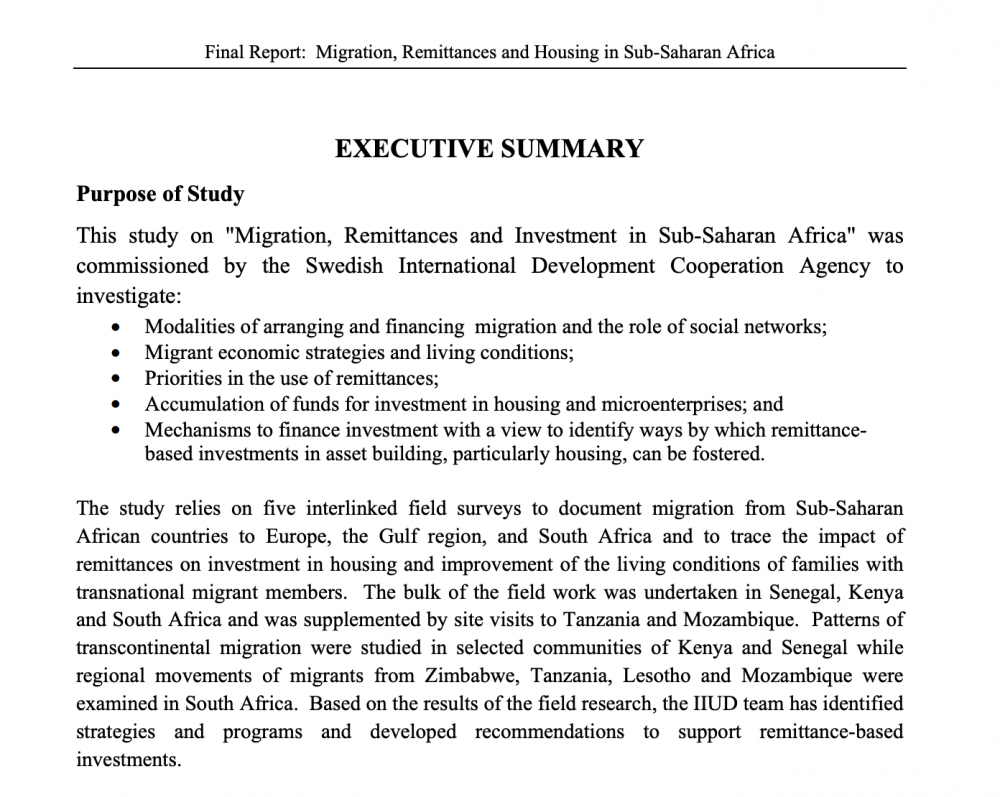Abstract
In 2007 and 2008, I2UD conducted a study on “Migration, Remittances and the Empowerment of Women in Central America and the Andean Region,” commissioned by the PROMESHA program of the Housing Development and Management Program (HDM) at Lund University and funded by the Swedish International Development Cooperation Agency (Sida). (See more on HDM’s Regional Capacity Development > PROMESHA at Lund University.)
The study provided background research for programs specifically designed to assist Latin American women affected by migration, in Latin American countries — Honduras, El Salvador, Ecuador, Chile, Peru, Colombia, and Argentina.
Dr. Mona Serageldin’s focus centered empowering women’s experience of navigating migration and housing needs — by examining remittance sending and receiving patterns, and funding use priorities. Suggested strategies included investing remittance funds into key assets for Latin American communities, chiefly to meet housing needs. Documents include an interim report (January 2007) and final report (August 2008).
| Project Year: | 2007-2008 |
| Project Type: | Research Paper |
| Geographic Regions: | Honduras / El Salvador / Ecuador / Chile / Perú / Colombia / Argentina |
| Reports: | |
| Authors: | Mona Serageldin; Christa Lee-Chuvala; Carolina Morgan; Alejandra Mortarini |
| Sponsors: | Swedish International Development Cooperation Agency (Sida) |
| Categories: | Reconciliation and Development |
| ID: | 2007_07_002 |
Related I2UD Projects
Related I2UD Photograph Galleries


